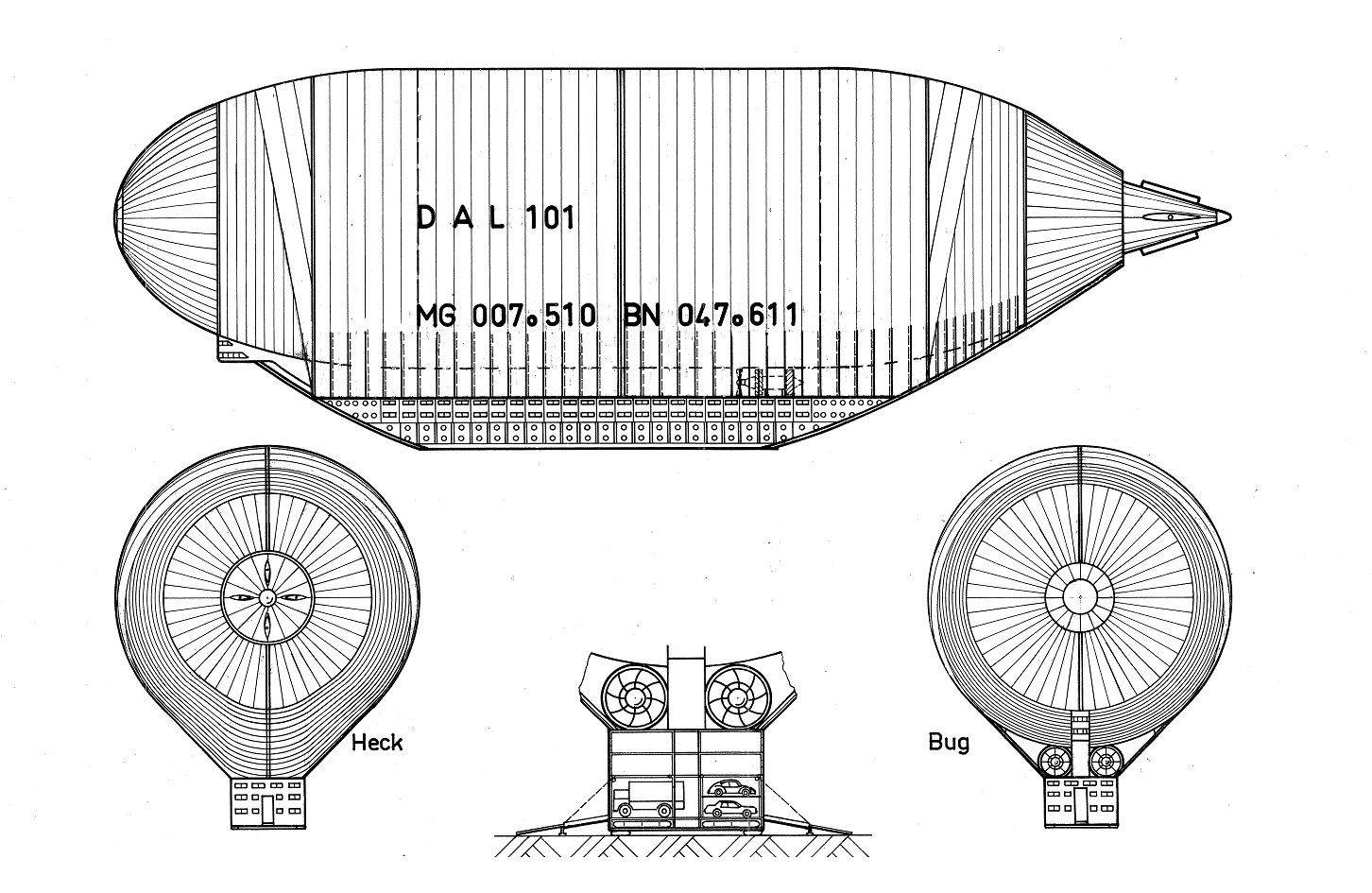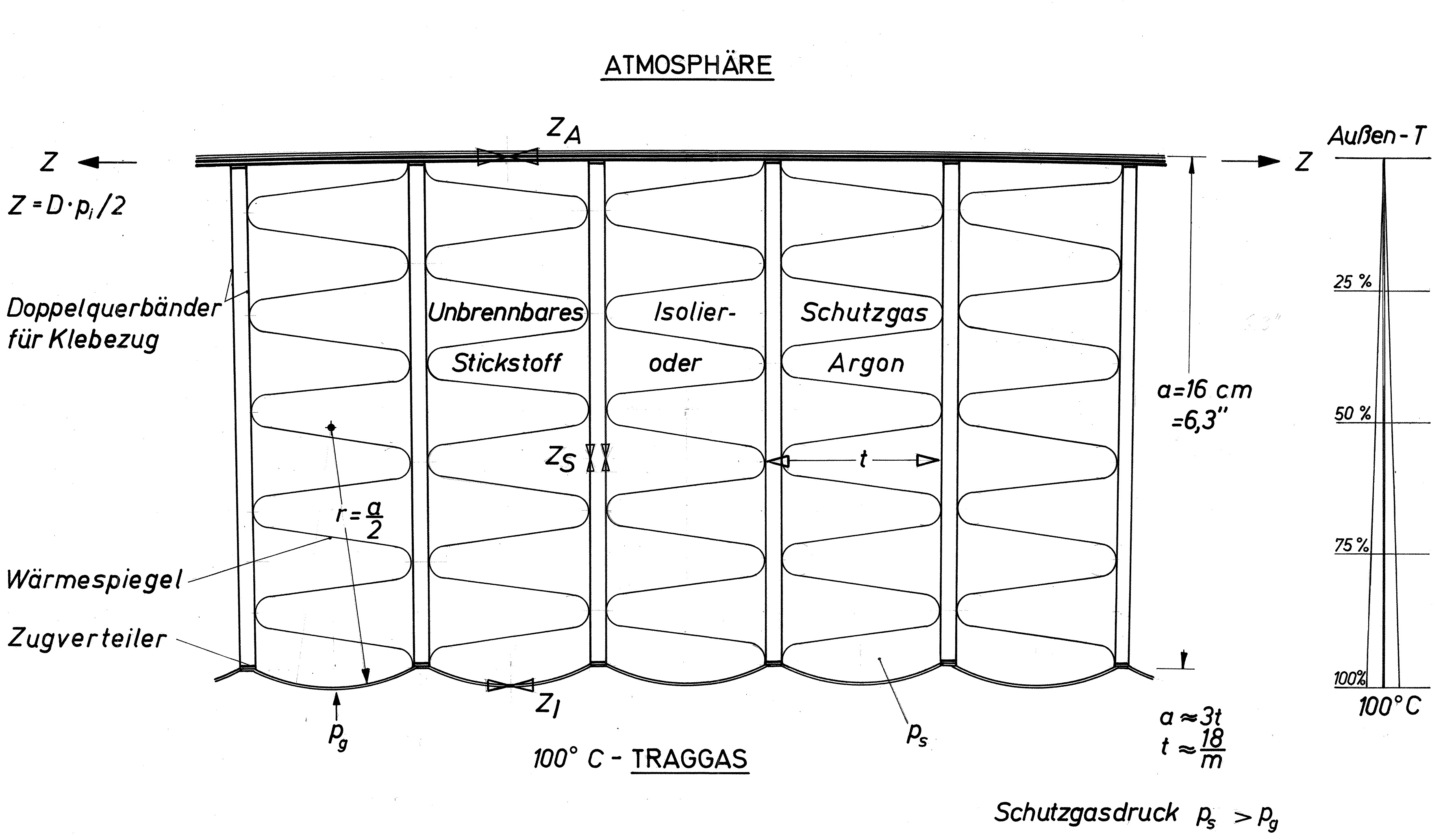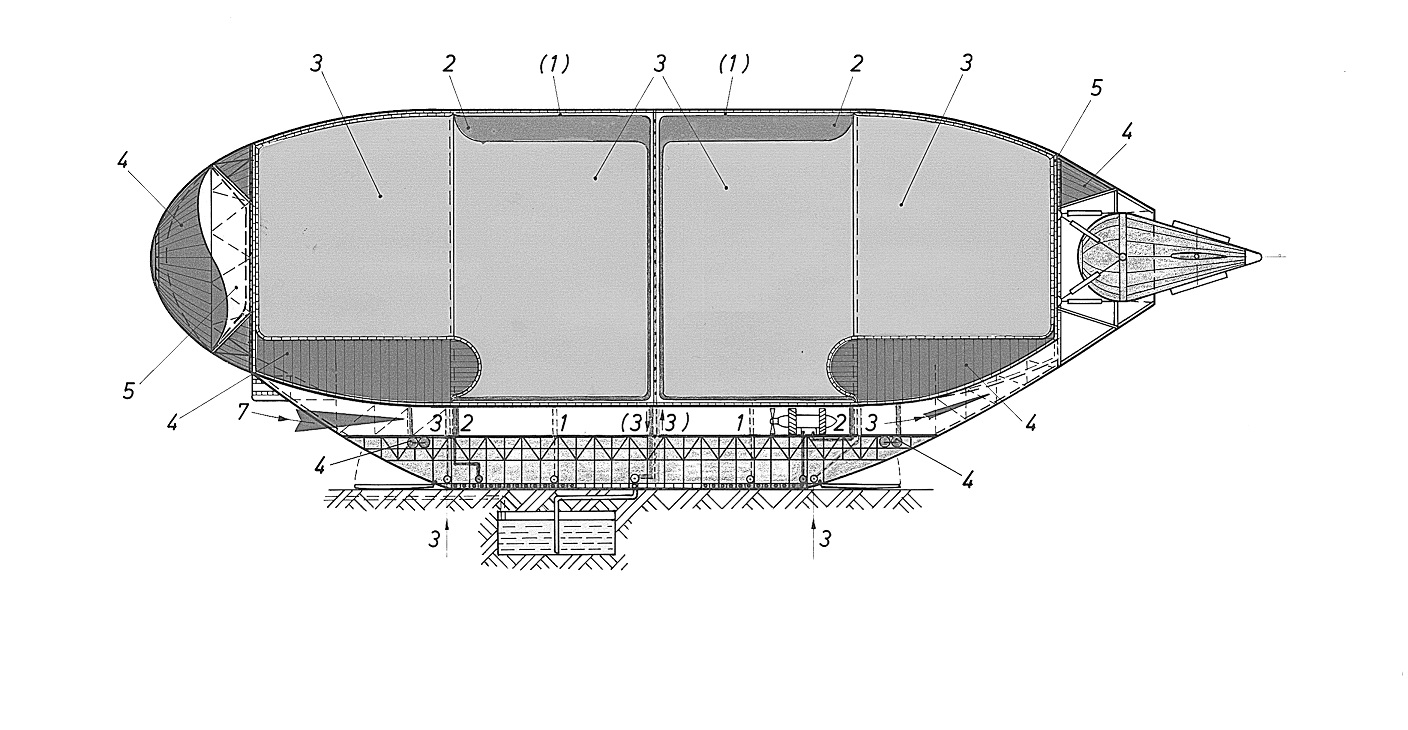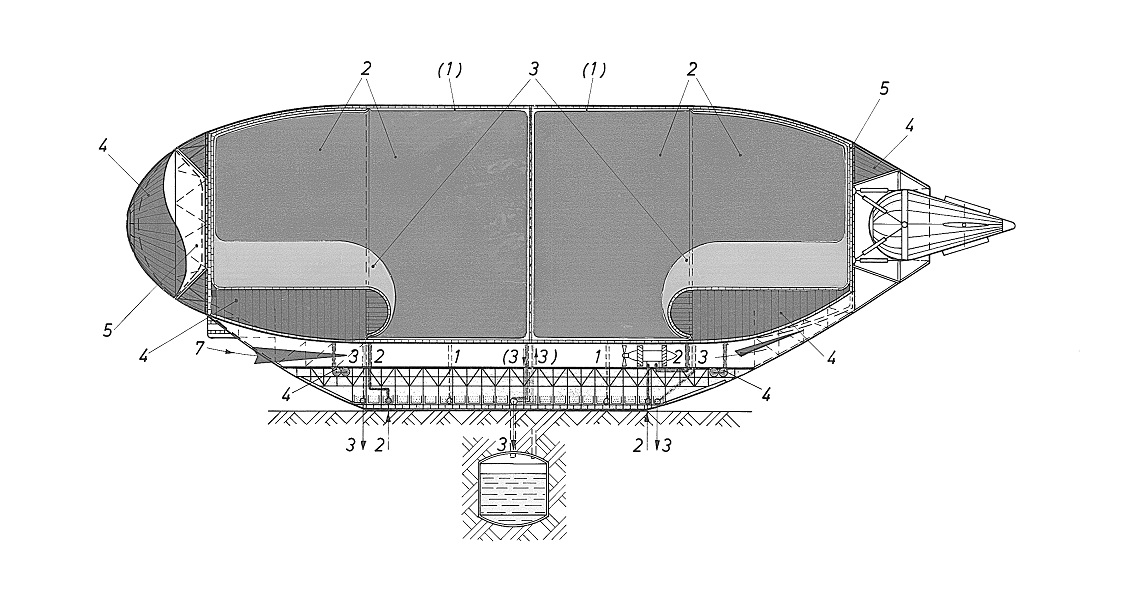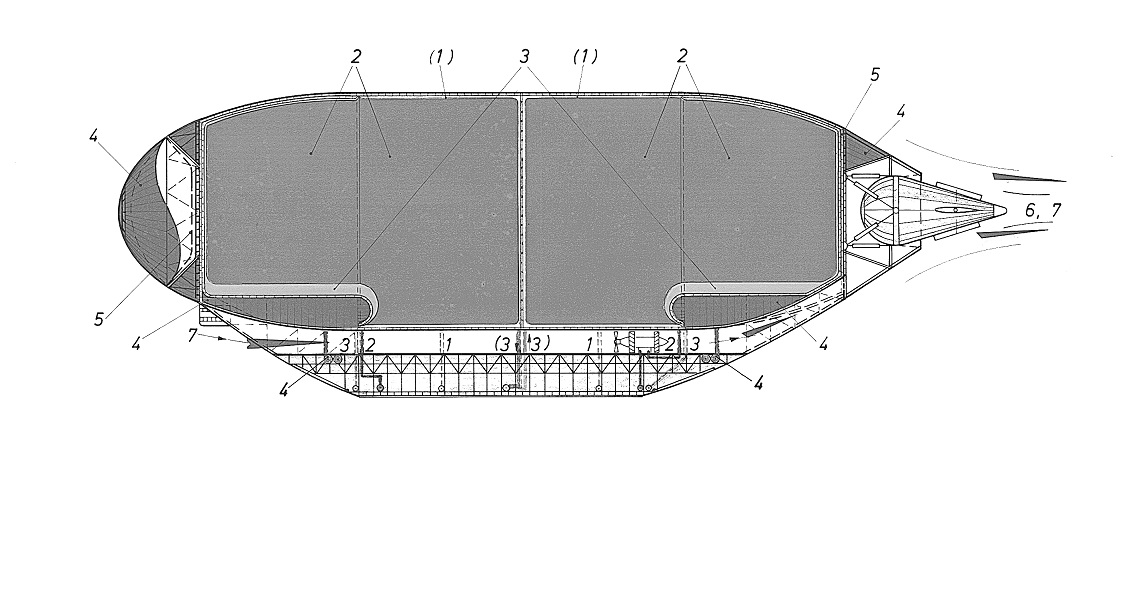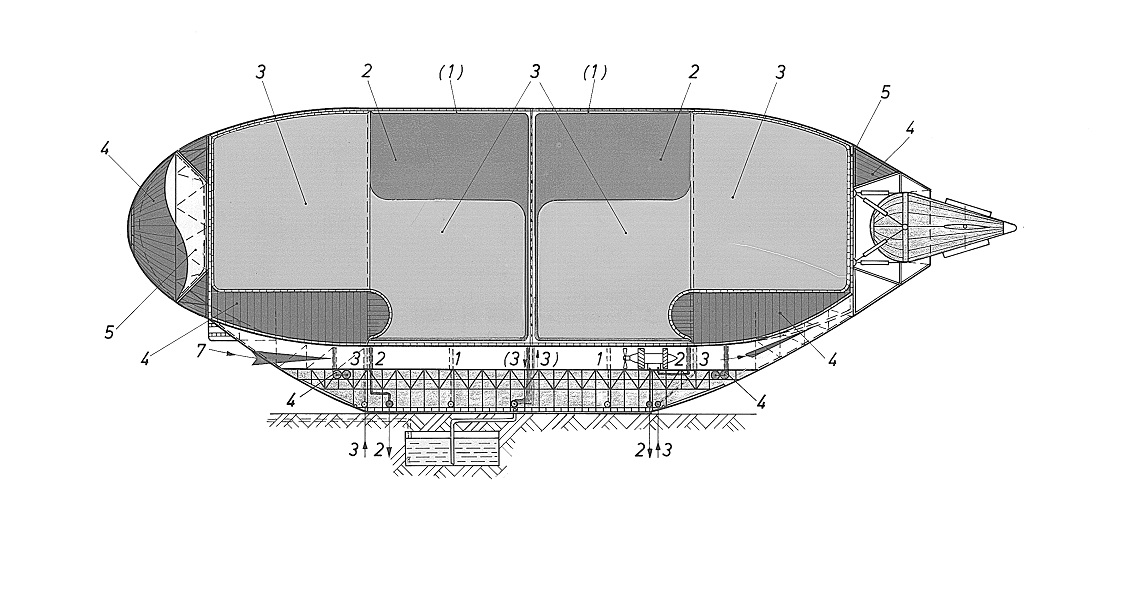Steam-Lifted Airship
–
Hermann Papst realized that steam, which is quite buoyant (lighter than air), could be used as an uplifting gas for airships. An airship such as this would need thermal insulating twin walls. The condensate on the inner side of the hull is transformed back into steam by heating. But steam can also be produced on board, through burning natural gas. The internal combustion engine can use the natural gas for moving forward and in heating devices, for generating the lifting force. Through that, liquid or solid fuel can be avoided.
The semi rigid airship contains several foldable lifting cells for different kinds of lifting gases like natural gas, steam, hydrogen or hot air. The lifting force (buoyancy), which changes depending on the gas consumption, is controlled through the adjustable filling of the compensation cells.
The Steam-Lifted Airship
–
Partitions opening up to the outside create a changeable gas cell
Thermally insulating, nitrogen-filled twin walls
–
Using airships for the transportation of natural gas
This concept enables the transportation of natural gas to a power plant without having to install fixed pipelines on the ground. After reaching the power plant the plenty fold steam produced by its steam turbine, presses the transported natural gas into the power plant gas storage. Only 5 % of the gas volume with which the airship is inflated, is necessary to maintain the lifting force and moving forward all the way to the natural gas source. Through this “shuttle service” between the natural gas source and the power plant, it is possible to exploit small sources or sources located in politically insecure regions, as well.
This airship would not only be useful for the transport of natural gas, but also for very voluminous or heavy transports, as well as for missions in catastrophe areas or excursions with tourists. 6 patents were granted in 112 states.
–
The Airship DAL for the transportation of natural gas.
–
1. The steam from the power plant is used for the lifting force of the airship
2. Hot air and steam are pushed out of the airship by natural gas from a gas source
3. The airship flies from the source to the power plant
4. The natural gas is pushed out of the airship and led into the power plant.
And can be used as an energy source


